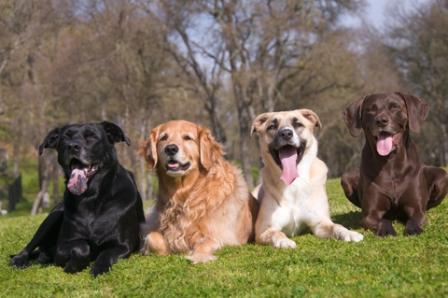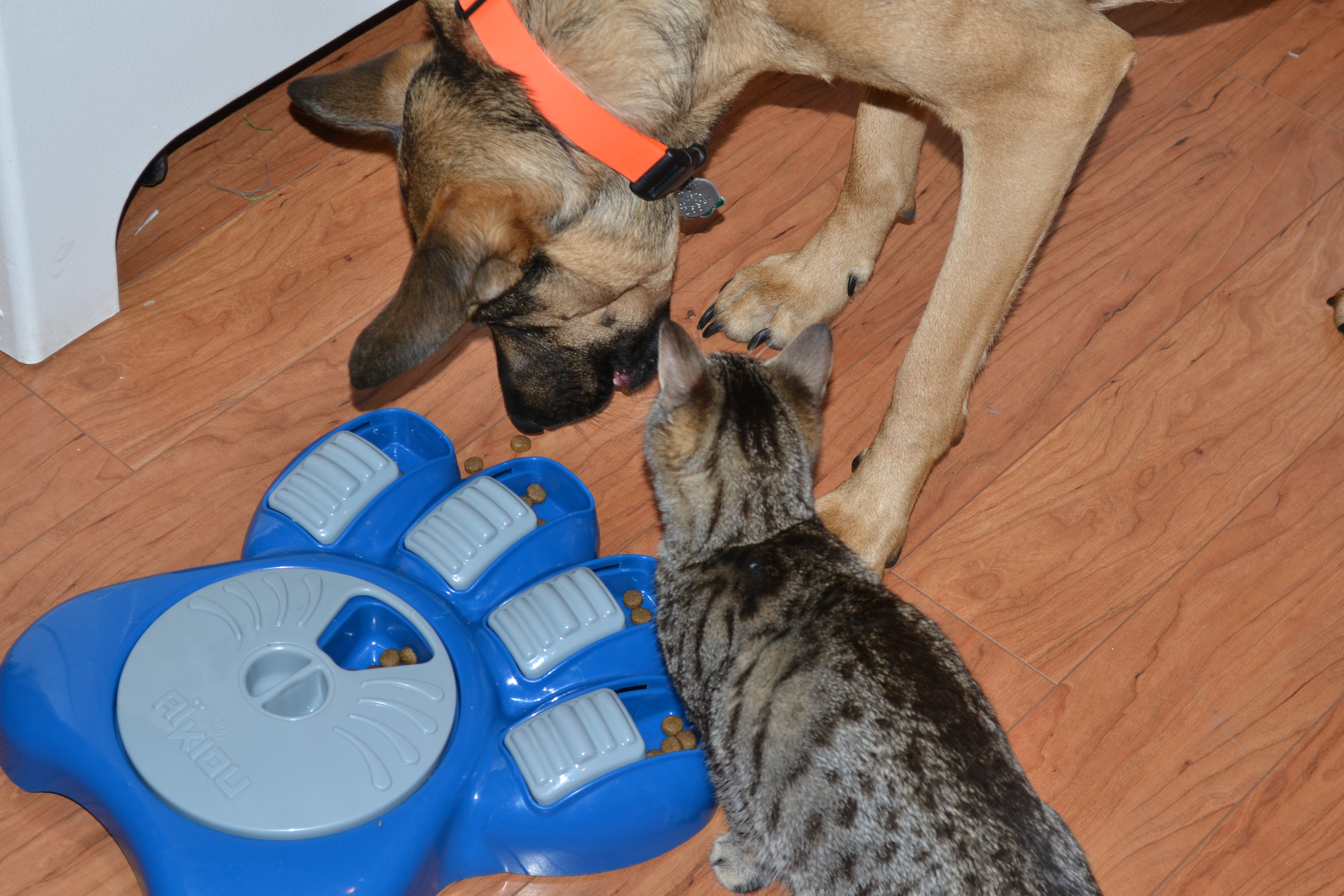I recently took up a new position as a Day School Trainer at a local dog training company. While I still get to teach classes and give private lessons, I also have the opportunity to work with a different group of dogs everyday. This has really put me on the fast track to “pack” management and my observation skills are at an all-time high! I’ve had the opportunity to learn some of the techniques they use to manage various groups of dogs using positive reinforcement. We provide boarding and day school for dogs of all ages and all breeds. Most dogs that come for day school have very little training under their belts.
This dog training company is proud to be positive reinforcement based for both dogs and people. I’ve enjoyed the positive reinforcement I receive for work done well and the dogs are constantly being rewarded for appropriate behaviors. In addition, we teach them some basic skills so that they learn to listen in group situations and some skills to handle emergency situations. Here are some of the skills we teach each dog.
Collar Grab Conditioning
When working with groups of fairly inexperienced dogs, teaching each dog to enjoy hands coming at them and grabbing their collars is a necessary task. In an emergency situation, they need to be comfortable with us mobilizing them away from other dogs or people. Here is a great video demonstrating just one of the techniques to teach this skill:
Regular Positive Interrupters
Regulating the intensity of play is a great way to prevent dogs from getting out of control. By using a positive interrupter consistently before play gets out of hand, we prevent fights and teach dogs how to de-escalate quickly. Dogs who have been coming for a while are experts at stopping play immediately upon hearing the sound “WooHoo!!” because they have been conditioned to think a treat is about to follow. This allows us to manage play, keep dogs comfortable with each other, and no pain or intimidation is needed. Here is a good video demonstrating how to teach a positive interrupter:
Emergency Sits or Stops
Another technique we use to diffuse situations between dogs is called an emergency sits. We practice quick sits all the time throughout every day to reinforce the behavior and make it something the dogs will do without much thought.
Leave It or Drop It
We are one of the few daycares that allow toys in the yards with most dogs. This means we also need to practice regular drop its and leave its with dogs that show even just the slightest signs of guarding. Toys are a great way to enrich the dogs’ lives, but they do make our jobs a little more difficult because of the management we need to do while they are playing with them. Here are some great ways to teach Leave It and Drop It:
Leave It – http://youtu.be/pEeS2dPpPtA
Drop It
Observing and Understanding Calming Signals
 This is probably the most imporant part to managing a group of random dogs. Being able to spot when one if uncomfortable before the situation escalates leads to successful group management. If you can catch the situation early, you can redirect the dog that is making the other dog uncomfortable. Here are some signals I look for that tells me a dog is uncomfortable:
This is probably the most imporant part to managing a group of random dogs. Being able to spot when one if uncomfortable before the situation escalates leads to successful group management. If you can catch the situation early, you can redirect the dog that is making the other dog uncomfortable. Here are some signals I look for that tells me a dog is uncomfortable:
- lip licking
- yawning
- ears pinned back to the head
- walking away or turning away
- whale eye (showing the whites of the eyes)
Appropriate play includes the following:
- reciprocal body posturing
- loose and curved bodies
- play bows
Every dog is an individual and plays in their own manner. Some dogs are very loud and growly, but it doesn’t mean they are being confrontational. Just like people, some are more vocal than others! Understanding each dog’s play style allowes me to learn what is normal and abnormal for them. Its really been such a joy and learning experience to get to know each dog. They are truly all individuals.
Reactive Management
Proactively teaching dogs the skills they should know allows us to manage groups with positive reinforcement. We aren’t sitting around waiting for them to mess up (fight, bark, dig, etc) and then correcting them. They are taught from the beginning what is expected of them so that they can offer up behaviors that have a history of getting them what they want. We are setting them up to succeed by teaching them behaviors we want to see before we expect them to use them. Our understanding of dog behavior lets us pair up dogs correctly as well!
Stay tuned for Part II and Part III!




